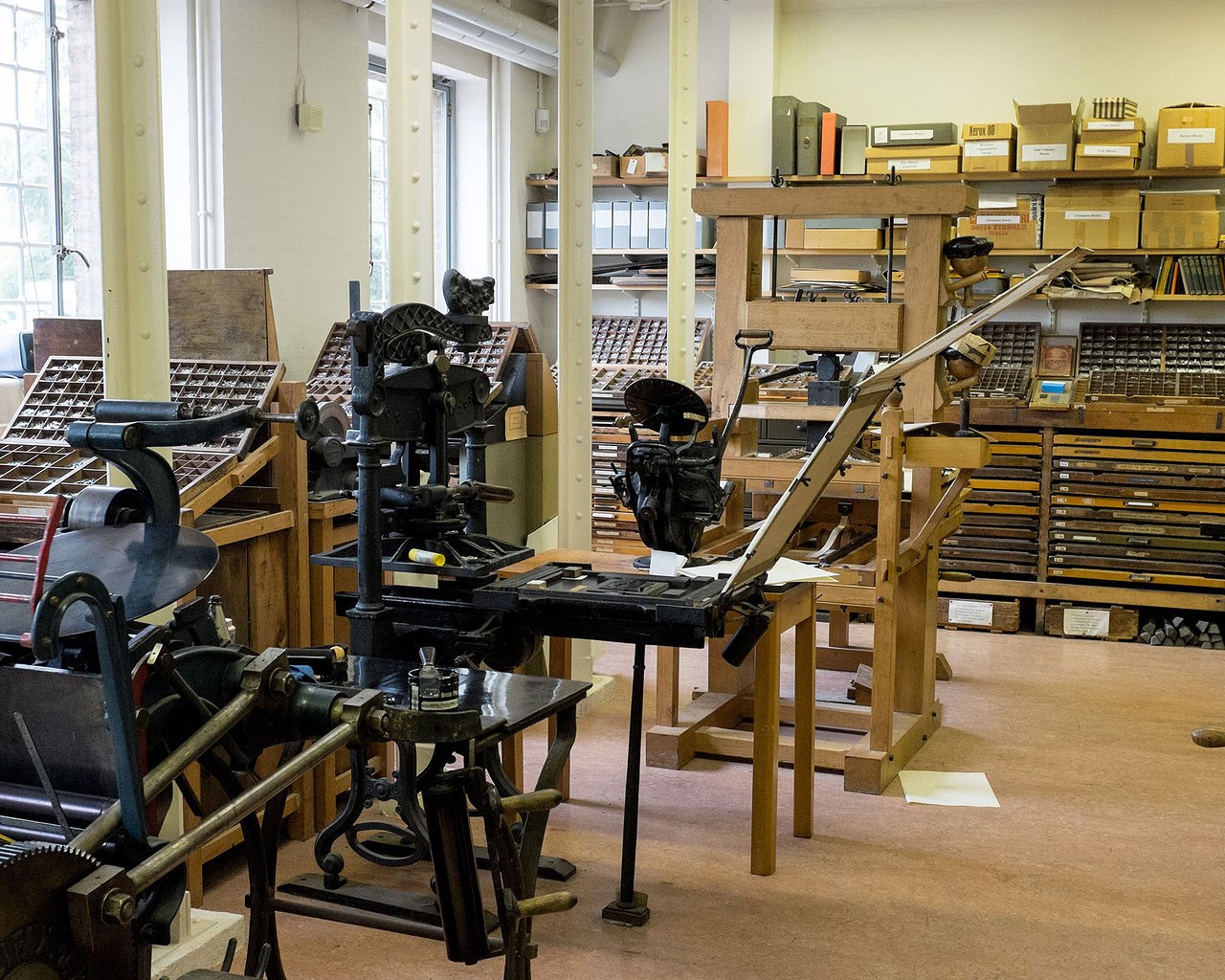
Cambridge University Library Historical Printing Room
Cambridge University Library Historical Printing Room
Cambridge University Library
West Road
Cambridge
CB3 9DR
Web: ib.cam.ac.uk/collections/departments/rare-books/rare-books-collections/historical-printing-room
Email: ls457@cam.ac.uk (Liam Sims) or rarebooks@lib.cam.ac.uk
Telephone: +44 (0) 1223 333123
The Library holds a number of collections of both printed and archival material of typographical interest. Foremost among these are the libraries of the British typographer Stanley Morison, Francis Meynell and John Dreyfus; the collection of Allen Hutt, historian of journalism and newspaper design; and the Broxbourne collection. Among archival sources, the Cambridge University Press collection is probably the largest, but the Curwen Press, Nonesuch Press, and Rampant Lions collections are also significant. More information is available online. The Library also has a considerable collection of printing artefacts (much of which remains the property of Cambridge University Press & Assessment), including the eighteenth-century punches for John Baskerville’s type; punches, matrices, and brass patterns (from which punches could be made mechanically) from the Golden Cockerel Press; the ‘Brook’ type from the Eragny Press; punches for the Subiaco and Ptolemy types used by the Ashendene Press; punches, matrices, and bookbinders’ tools from Count Harry Kessler’s Cranach Press; and punches for Eric Gill’s Perpetua and Joanna. Equally important is the material from William Morris’ Kelmscott Press: the punches and matrices for his Troy, Chaucer, and Golden types, cases of type for each face; two of the paper moulds made specially for Morris’ use; and a small stock of his ‘Flower’ paper.
The Historical Printing Room itself has its origins with a decision in the early 1970s to set up a bibliographical teaching press by Philip Gaskell, then Librarian of Trinity College. The equipment for his classes came from a number of sources. Most important was a full-size replica of a late eighteenth-century wooden handpress built to his designs in the workshops of the Engineering Department. This was joined by two presses of his own. The bulk of the type was cast by the University Press, also supplemented by Gaskell’s own. The auction of a small printing business provided a fine Albion royal handpress and a considerable quantity of wood-letter in remarkably good condition.
